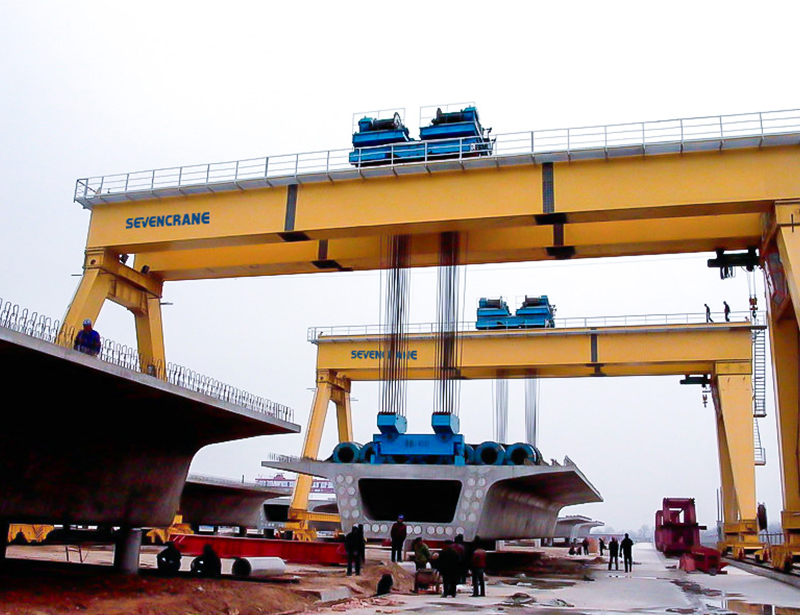When the gantry crane is in use, it is a safety protection device that can effectively prevent overloading. It is also called a lifting capacity limiter. Its safety function is to stop the lifting action when the crane’s lifting load exceeds the rated value, thereby avoiding overloading accidents. Overload limiters are widely used on bridge type cranes and hoists. Some jib type cranes (e.g. tower cranes, gantry cranes) use an overload limiter in conjunction with a moment limiter. There are many types of overload limiters, mechanical and electronic.
(1) Mechanical type: The striker is driven by the action of levers, springs, cams, etc. When overloaded, the striker interacts with the switch that controls the lifting action, cutting off the power source of the lifting mechanism, and controlling the lifting mechanism to stop running.
(2) Electronic type: It is composed of sensors, operational amplifiers, control actuators and load indicators. It integrates safety functions such as display, control and alarm. When the crane lifts a load, the sensor on the load-bearing component deforms, converts the load weight into an electrical signal, and then amplifies it to indicate the value of the load. When the load exceeds the rated load, the power source of the lifting mechanism is cut off, so that the lifting action of the lifting mechanism cannot be realized.
The gantry crane uses the lifting moment to characterize the load state. The lifting moment value is determined by the product of the lifting weight and the amplitude. The amplitude value is determined by the product of the arm length of the crane boom and the cosine of the inclination angle. Whether the crane is overloaded is actually limited by the lifting capacity, boom length and boom inclination angle. At the same time, multiple parameters such as operating conditions also have to be considered, which makes control more complicated.
The currently widely used microcomputer controlled torque limiter can integrate various situations and solve this problem better. The torque limiter consists of a load detector, an arm length detector, an angle detector, a working condition selector and a microcomputer. When the crane enters the working state, the detection signals of each parameter of the actual working state are input into the computer. After calculation, amplification and processing, they are compared with the pre-stored rated lifting moment value, and the corresponding actual values are displayed on the display. . When the actual value reaches 90% of the rated value, it will send out an early warning signal. When the actual value exceeds the rated load, an alarm signal will be issued, and the crane will stop operating in the dangerous direction (raising, extending the arm, lowering the arm, and rotating).








